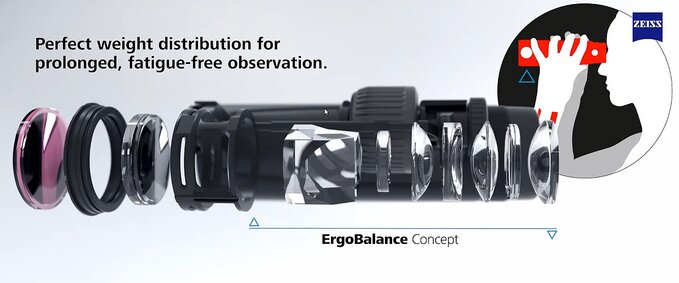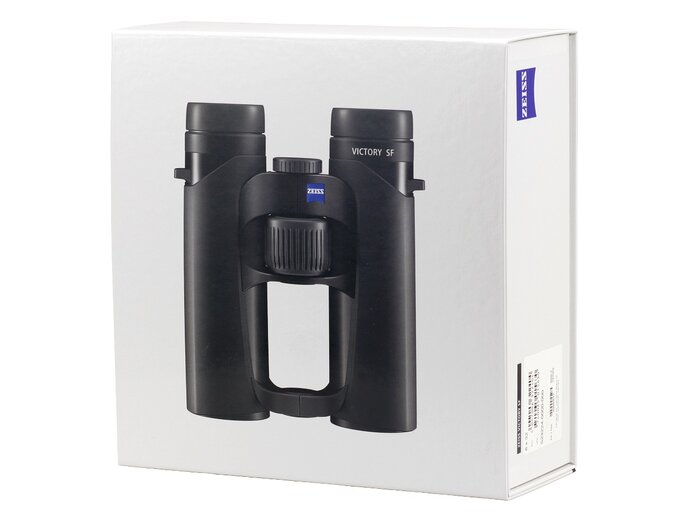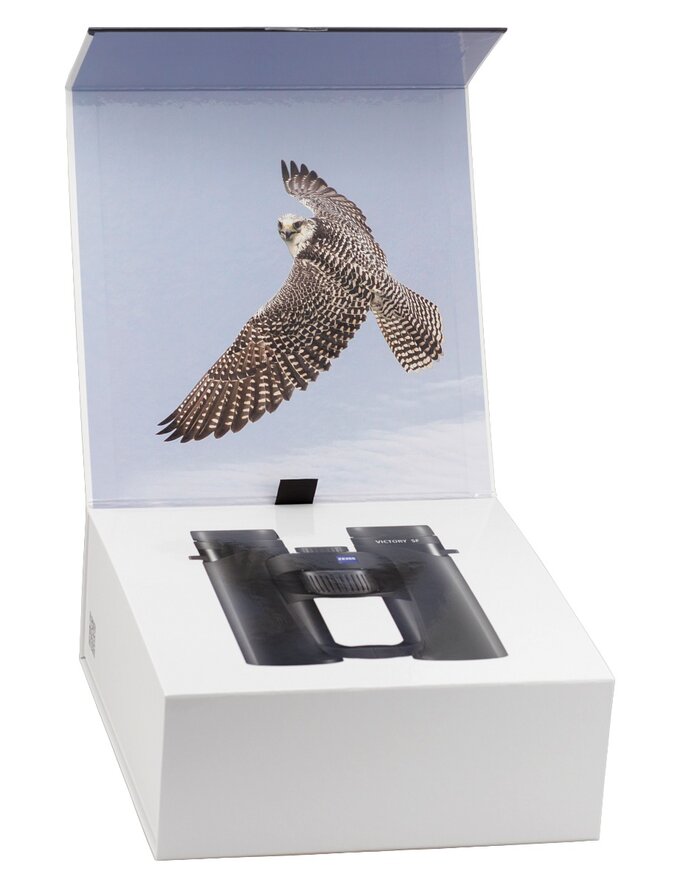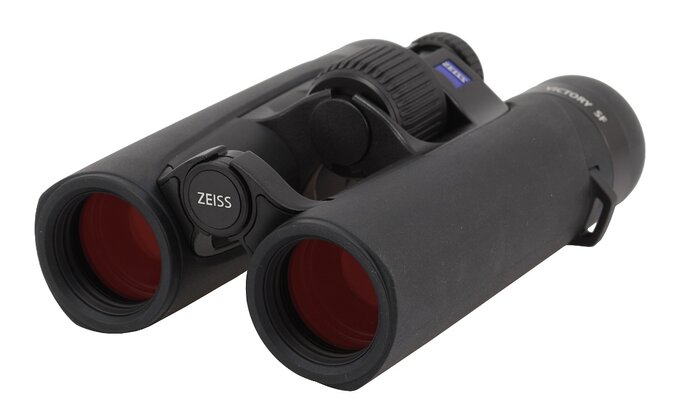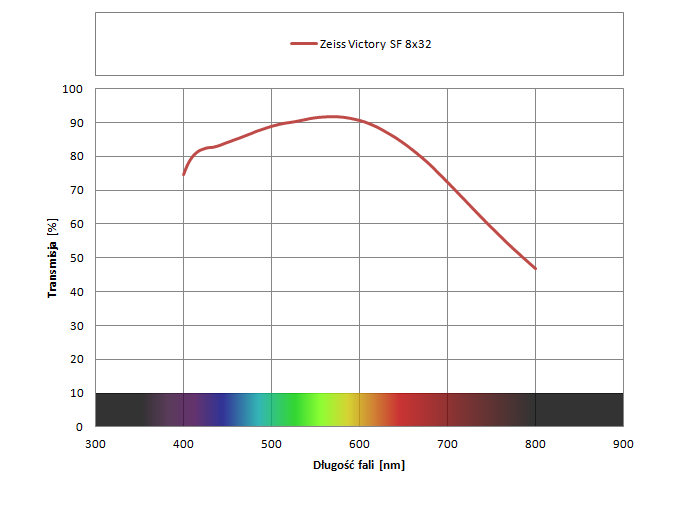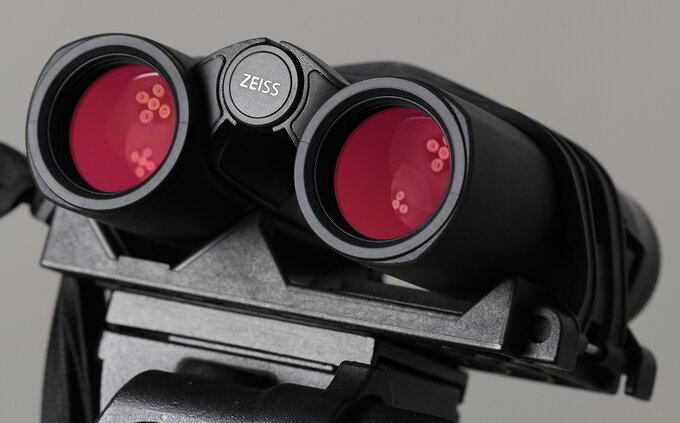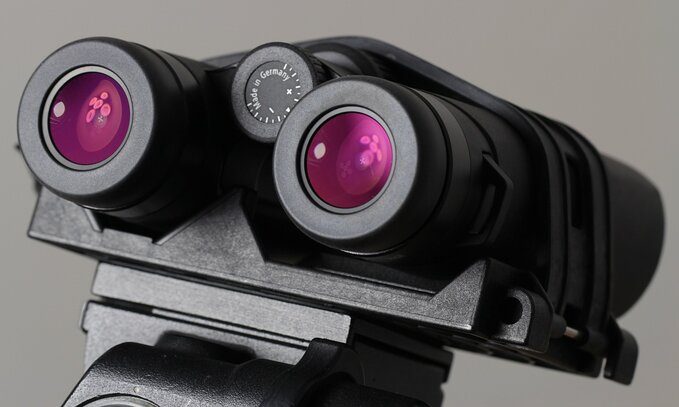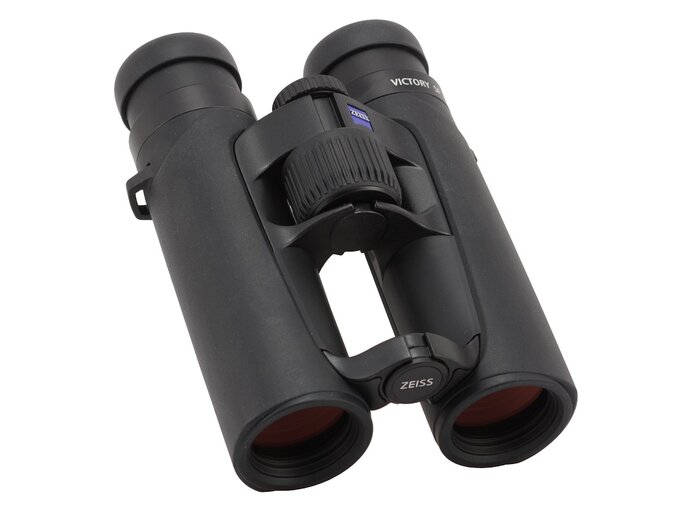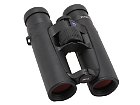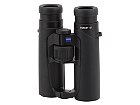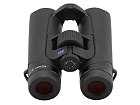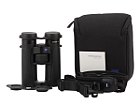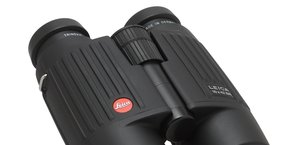There's a very long tradition of producing 8×30/8×32 pairs of binoculars by the Zeiss company. After all every binoculars fan has heard of such models as the Deltrintem 8×30, launched as soon as 1920, or the Dialyt 8×30 that, in different versions, dominated the market from 1964 to the beginning of the 21st century.
Lately Zeiss have been revamping different lines of their binoculars and that process concerned also the 8×32 class. In 2004 the production of the Zeiss Dialyt 8×30 B/GA T* ClassicC was ended and, at the same time, the cheaper Zeiss Conquest 8×30 T* and the flagship Zeiss Victory FL T* 8×32 were launched. The Conquest 8×30 production ceased in 2012 and then it was substituted by a much better successor, the Conquest HD 8×32 which has been a part of the Zeiss line-up up to now.
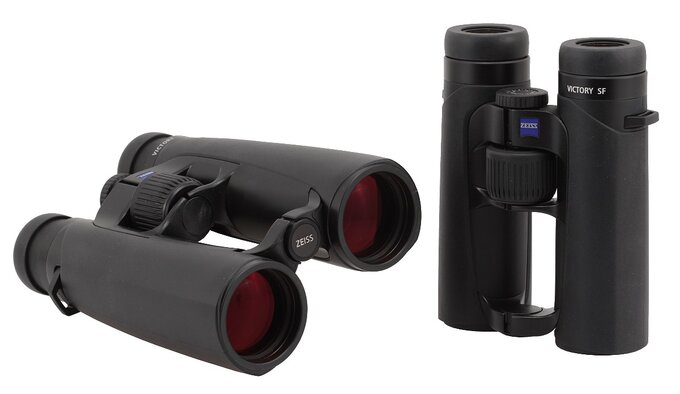
Zeiss Victory SF 8×42 and Zeiss Victory SF 8×32. |
Flagship 32 mm binoculars had to wait for a successor a bit longer – only in March 2020 Zeiss announced new models, the Victory SF 8×32 and the 10×32. Their fields of view were impressive, amounting to, respectively, 8.8 and 7.4 degrees, and they also offered a very comfortable eye relief, that of 19 mm. Physically these devices were quite big for the 32 mm class, with the length up to 15 cm, and not especially light, weighing 590-600 grams. In
the following chart you can find a comparison between basic parameters of the new models and their predecessors. When it comes to the new models it's immediately obvious almost everything has been improved but you can notice that the previous FL binoculars were really small and lightweight.
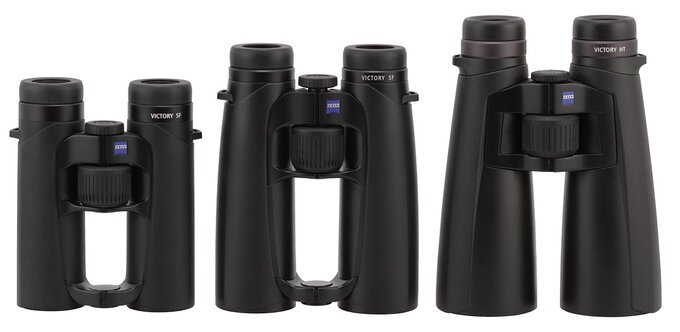
Zeiss Victory SF 8×32, Zeiss Victory SF 8×42 and Zeiss Victory HT 8×54. |
As we speak about a flagship series of products you expect to find the best, most advanced solutions and materials. Accordingly, in the objective lens you can find Schott's fluoride glass that is supposed to ensure splendid correction of chromatic aberration. The construction of the objective, compared to the Victory FL series, is simplified, with thin elements inside, and the centre of gravity is moved toward the optically complex eyepiece. It's been done to ensure a stable grip and better stability.
A very complex optical construction of the eyepiece resulted in a wide and properly corrected field of view, joined with an eye relief distance amounting to as much as 19 mm. Zeiss diagrams show that behind the Schmidt-Pechan prism system you find as many as six groups of elements, with seven or even eight elements in them.
All air-to-glass surfaces have been covered by multilayer antireflection T* coatings. The Schmidt-Pechan prisms are dielectric and phase correction coated and outer elements are additionally covered by LotuTec hydrophobic coatings.
The optics is hidden in a casing that is nitrogen purged and waterproof (up to 400 mbar) and the binoculars can work in temperatures ranging from –30 to +63 degrees Centigrade.
As it befits the flagship series the binoculars are sold in a very stylish box and inside you find a whole array of additonal accessories. There is a black case, completely different from the case added to the SF 8×42 and the SF 10×42 devices: it's smaller, softer, and more cuboid in shape. In the box you also can find a neoprene strap, objective caps, a rainguard and an optics cleaning kit.
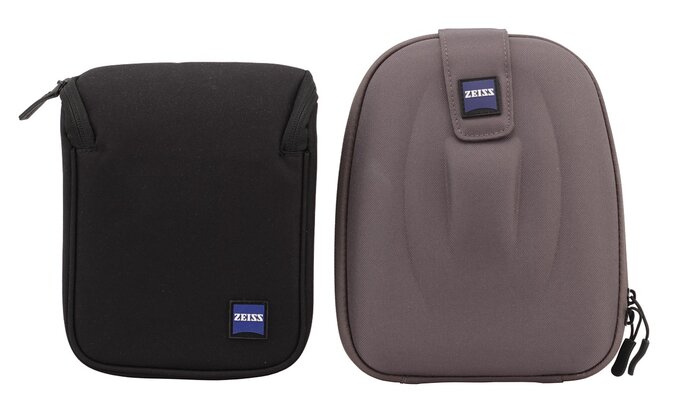
Cases for Zeiss SF 8×32 and SF 8×42 binoculars. |
All Victory SF series binoculars come with a 10-year warranty period of the producer.
Distribution / Sales:
M.K. Szuster
web site
| Magnification |
Lens diameter |
Angular field of view |
Prisms |
Eye relief |
Weight |
Price |
| 8 |
32 |
155/1000(8.8o) |
BaK-4/roof |
19 mm |
600 g |
9500 PLN |
|
|
| Real front lens diameter |
Left: 32.06+/-
0.05 mm
Right: 32.05+/-
0.05 mm
|
8 / 8.0 pkt |
| Real magnification |
8.04+/-
0.05x
|
3/3.0 |
| Transmission |
90.6+/-
1%
|
18/25.0 |
| Chromatic aberration |
Practically lack of CA in the centre. Low level on the edge. |
9.4/10.0 |
| Astigmatism |
Almost point-like images of stars. |
8.5/10.0 |
| Distortion |
The distance of the first curved line from the field centre compared to the field of vision radius: 76% ± 3% |
9/10.0 |
| Coma |
Appears in the distance of about 75% from the centre of the field of view and it is really low on the very edge. |
8.5/10.0 |
| Blurring at the edge of the FOV |
The blur occurs in the distance of 97% +\- 2% from the centre of the field of view. A very slight blurry area visible only near the very diaphragm.
|
10/10.0 |
| Darkening at the edge the FOV |
Noticeable but still moderate. |
3.8/5.0 |
| Whiteness of the image |
Distinct green hue. The transmission curve is not as flat as you would expect. Noticeable loss of blue-purple light. |
3.8/5.0 |
| Collimation |
Perfect. |
5/5.0 |
| Internal reflections |
| Left: |
Right:
|
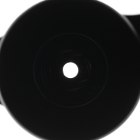 |
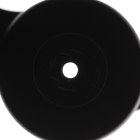 |
Pupils situated against a very dark background but we deducted points for very visible spikes on lampposts. |
4/5.0 |
| Housing |
Classic open hinge look. A really long casing for the 8x32 class – some 8x42 binoculars can be shorter. Black, matt rubber armour on the barrel but without a hint of texture. Still it sticks to your hands very well and the binoculars are comfortable to hold and to look through. Rubber remains attached to the barrel everywhere, doesn't stick out. Rubberized eyecups with four detention stops. Produced in Germany. |
8/8.0 |
| Focusing |
Focusing done with help of a huge central wheel positioned almost exactly under you index finger. The wheel is covered by rubberized ribs and it turns with even, smooth resistance. Its focus throw (from the declared 1.95 meters to infinity) amounts to an angle of about 580 degrees. It is a sensible value and quite typical for this class of parameters. A smaller ring, positioned on the main bridge in the middle of the binoculars, opposite to the central wheel, controls dioptre correction. Everything moves as it should, all operations are performed outside the casing, nothing moves inside. That way the construction remains completely weather-sealed. |
5/5.0 |
| Tripod |
No tripod socket but, optionally, you can buy a tripod adapter. In all tests of 8x32 binoculars we awarded an average value of 1.5 points as in this class of equipment a tripod socket is rarely needed or used.
|
1.5/3.0 |
| Interpupilary distance |
from 53.7 to 76mm
|
5/6.0 |
| Closest focusing distance |
1.80 meters. |
2/2.0 |
| Eyepieces FOV |
Apparent field of view of 70.4 degrees according to the simplified formula and 63.2 degrees according to the tangent formula. |
16/20.0 |
| Field of view |
Measured by us amounted to 8.75 +/- 0.04 degrees and was almost in perfect accordance with the specifications. A huge field for this class of equipment. |
8/8.0 |
| Quality of the interior of the barrels |
One glance inside the tubes and you know that they are perfectly blackened. Edges of the cell with the focusing elements and the casing of the prisms themselves are matt and gray; still, they reflect noticeable amounts of light when you examine them with a torch. The same can be said about the screw and the rail keeping the focusing element cell mechanism. What's more, you can notice pronounced light reflections from a narrow ring that joins two parts of the barrel right next to the cell with the prisms.
When it comes to cleanliness the binoculars are far from perfect as well. In both tubes we noticed some specks of dust and torch beam showed clearly a shiny edge of the roof prism.
|
2.8/5.0 |
| Vignetting |
| Left: |
Right:
|
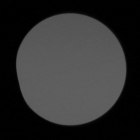 |
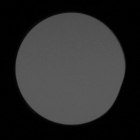 |
OL: 1.42%, OR: 2.36% |
5.5/8.0 |
| Prisms quality |
High quality BaK-4. |
8/8.0 |
| Antireflection coatings |
Coatings on objectives are characteristically pink turning in some places into orange and purple – typical performance for Zeiss T* coatings. Similar reflections can be noticed when examining the prisms. From the side of the eyepieces pink colour prevails but you can notice slightly purple and yellow-orange reflections too. Low intensity of the coatings.
|
5/5.0 |
| Warranty [years] |
10 |
4.5/6.0 |
| Final result |
85.4%
|
162.3 / 190 pkt
|
| Econo result |
|
0pkt. |
Summary
Pros:
- solid casing of good quality,
- huge field of view – one of the widest in this class of equipment,
- high transmission,
- very low level of chromatic aberration both in the centre and on the edges,
- excellent correction of distortion,
- slight astigmatism,
- low coma,
- sharp images almost to the very edge of that huge field of view,
- exit pupil are against a very dark background,
- high quality prisms made of BaK-4 glass,
- good antireflection coatings.
Cons:
- truncated exit pupils,
- spikes on bright objects (e.g. lampposts),
- not especially flat transmission curve.
I don't doubt that the Zeiss Victory SF 8x32 elevates the whole 8x32 class on a complete new level and the first place in
our ranking reflects well that truth. A huge field of view, amounting to almost 8.8 degrees, is something that you might remember from the golden era of wide angle binoculars represented by such dinozaurs as the Nikon EII 8x30. Still, in the case of that old classics the field of view was blurry on the edge; the Zeiss is able to keep it sharp practically to the very diaphragm.
Add to that a sensationally corrected astigmatism, distortion and coma. Also chromatic aberration correction result, one of the best in the whole history of our tests, is achieved despite such a wide field of view. If you don't like CA effects, the Victory SF 8x32 is definitely your pair of binoculars because it fares distinctly better than all binoculars produced by its main rival, Swarovski. Swarovski binoculars have noticeable problems with chromatic aberration on the edge of the field which is often narrower than the field of the Zeiss.
Do you deal here with a perfect pair of binoculars? Unfortunately the answer is no. Our first reservations concern its transmission graph.
You can say a lot of things about the graph but you certainly can't call it flat. The transmission level is high, reaching 91% in the middle of the visible spectrum, a quite good performance taking into account the complexity of the optics. Previous tests of flagship Zeiss binoculars showed that the coating are optimized with the centre of the visible spectrum in mind so the transmission usually is the highest at that piace; still, as a result, images are warmed a bit, sometimes even featuring a delicate green hue.
In this case a high number of elements in the optical system became another problem. Optical glass absorbs more light at shorter wavelengths – that absorbtion of purple and blue light must have been crucial and the loss is noticeable. The transmission graph is more slanted than graphs of other Zeiss models and colour rendition is weaker. Images feature that green hue, not so difficult to notice. Some people might find it a bit disturbing.
It's difficult to say whether glass absorbtion or coatings are more to blame for this performance but the final result we find a bit too weak for a pair of top-of-the-range binoculars.
Two other flaws are a huge surprise for us. We didn't expect such a big set of binoculars, of course big for the 8x32 class of equipment, would have truncated exit pupils. It's a slip-up that definitely shouldn't have happened. Distinct spikes, visible when you look at bright objects situated against dark background, are another problem. It's very interesting, especially that the bigger brother of the tested device, the Victory SF 8x42, didn't feature that effect.
As we wrote at the beggining of this chapter, the Zeiss Victory SF 8x32 sets new standards for the 8x32 class and, so far, remains unrivalled. Still, unexpected flaws this model showed in our test mean there's still room for improvement - its rivals can try and throw it out of its pedestal. The opportunity is there but will they be able to make the most of it? Only time will tell.


